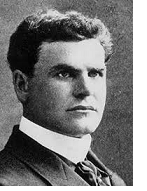 Much of Carlisle's success can be attributed to their Hall of
Fame head coach, Glenn "Pop" Warner. He coached at Carlisle 1899-1903
and 1907-1914, going 114-42-8. He is credited with inventing the
tackling dummy, screen pass, and shoulder and thigh pads, but his
greatest innovation was the single wing formation, which would dominate
college football offenses between the World Wars.
Much of Carlisle's success can be attributed to their Hall of
Fame head coach, Glenn "Pop" Warner. He coached at Carlisle 1899-1903
and 1907-1914, going 114-42-8. He is credited with inventing the
tackling dummy, screen pass, and shoulder and thigh pads, but his
greatest innovation was the single wing formation, which would dominate
college football offenses between the World Wars.Pop Warner's next stop after Carlisle would be Pittsburgh 1915-1923, where he went 60-12-4 and is credited with 3 national championships (I agree with 2 of these). After that, it was on to Stanford 1924-1932, where he went 71-17-8, coached in 3 Rose Bowls, and is credited with another national championship (I disagree).
Overall he finished 319-106-32 at 6 schools, setting a record for coaching wins that was later broken by Paul "Bear" Bryant and is now held by Joe Paterno.

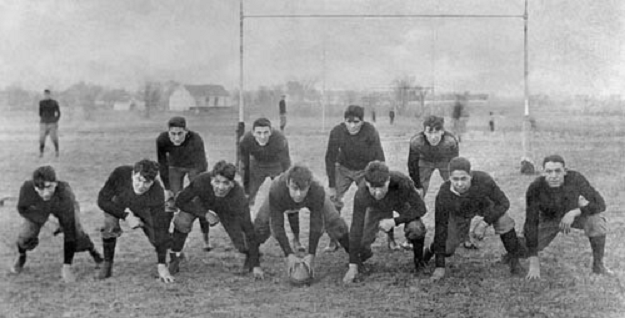
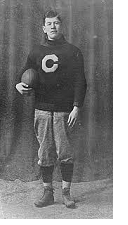 Halfback Jim
Thorpe is simply the greatest college football player of all time, and
with the modern shift to two platoon football and specialists, his
level of play can never again be approached. He was a tremendous ball
carrier, defensive back, placekicker, and punter-- during a time when
the kicking game was paramount (and thus great kickers were far more
prized and lionized than they are today).
Halfback Jim
Thorpe is simply the greatest college football player of all time, and
with the modern shift to two platoon football and specialists, his
level of play can never again be approached. He was a tremendous ball
carrier, defensive back, placekicker, and punter-- during a time when
the kicking game was paramount (and thus great kickers were far more
prized and lionized than they are today).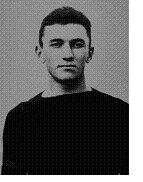 Jim
Thorpe's best friend and roommate, quarterback
Gus Welch (pictured at left), is also in the College Football Hall of
Fame. He was Pop Warner's coach on the field, calling the plays, as he
was very smart-- an Honors student who later graduated from the
Dickinson School of Law.
Jim
Thorpe's best friend and roommate, quarterback
Gus Welch (pictured at left), is also in the College Football Hall of
Fame. He was Pop Warner's coach on the field, calling the plays, as he
was very smart-- an Honors student who later graduated from the
Dickinson School of Law. 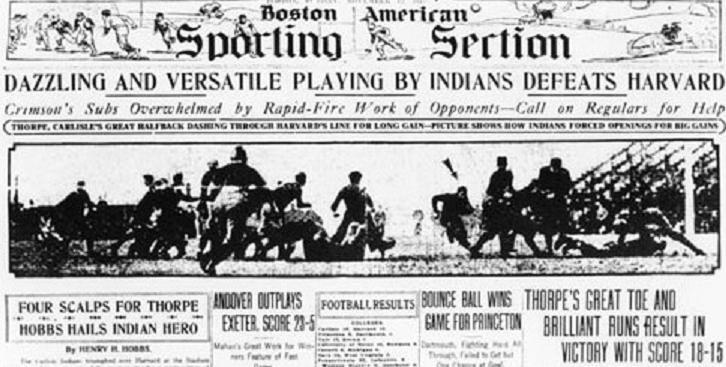
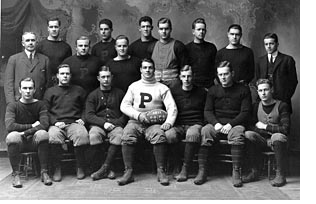 I covered previous Princeton teams for my articles on the 1903 and
I covered previous Princeton teams for my articles on the 1903 and 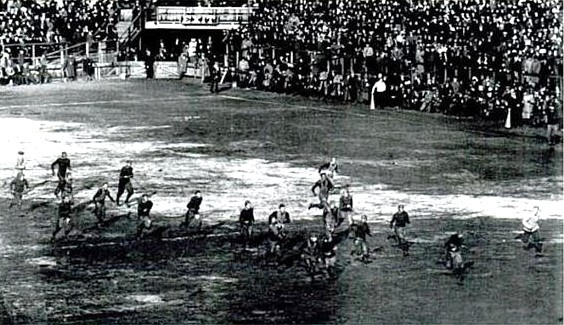
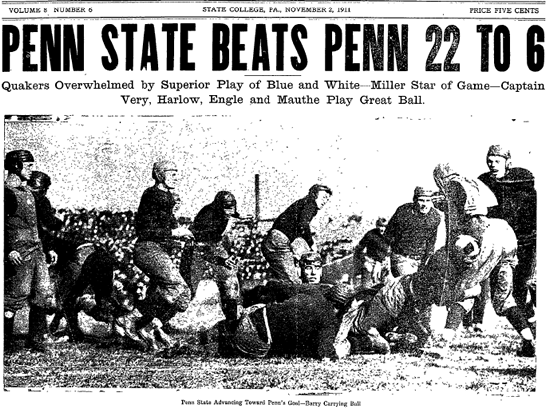
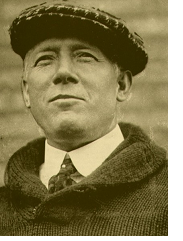 I've covered previous Minnesota teams for my 1903 and 1904
national championship articles, and I covered their Hall of Fame coach,
Henry Williams, in the 1903 piece. By 1911, Henry Williams (pictured at
left) had become one of the best known and most respected coaches in
football (he even had his own widely-published All American selections
this season). His "Minnesota shift" innovation (the now-standard
shifting of players during the count, then snapping right when they've
gotten into place) was sweeping across the country. In fact, after
years of rebuffing his offers to help them implement the shift,
Williams' alma mater Yale
had even adopted it (renamed the "Yale shift"). This was a
shocking development at the time, because the Old Eastern dogs simply
did not like learning new tricks from their Western pups.
I've covered previous Minnesota teams for my 1903 and 1904
national championship articles, and I covered their Hall of Fame coach,
Henry Williams, in the 1903 piece. By 1911, Henry Williams (pictured at
left) had become one of the best known and most respected coaches in
football (he even had his own widely-published All American selections
this season). His "Minnesota shift" innovation (the now-standard
shifting of players during the count, then snapping right when they've
gotten into place) was sweeping across the country. In fact, after
years of rebuffing his offers to help them implement the shift,
Williams' alma mater Yale
had even adopted it (renamed the "Yale shift"). This was a
shocking development at the time, because the Old Eastern dogs simply
did not like learning new tricks from their Western pups.